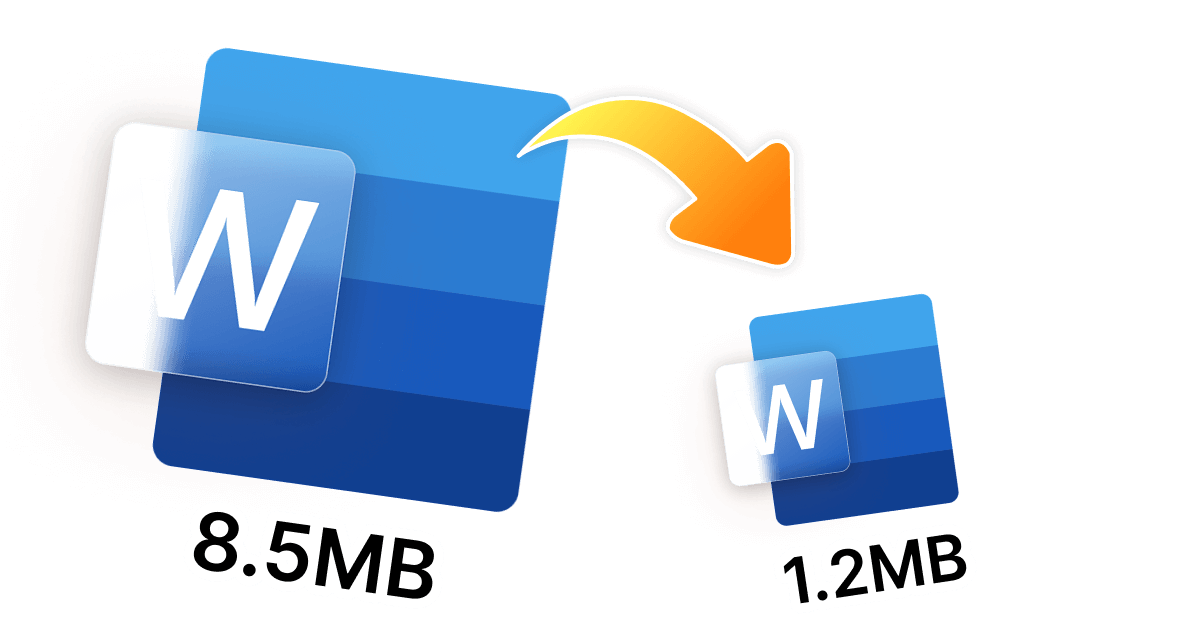"How do I compress a Word file?"If you have ever faced large Word files that are difficult to send out or upload, you're not alone.
As more people rely on digital documents for both business and communication, learning how to compress a Word file efficiently will be very crucial in 2025. Whether your report is lengthy, resume is thorough, or business proposal is complex, reducing file size without dropping quality will let you save time and device storage.
This write-up will go over eight easy, practical ways to compress Word files so you can quickly manage your documents. Moreover, reducing Word files will also let you have them ready for sharing or posting with the least effort.
In this article
Part 1: Why is My Word Document so Large?
Have you ever questioned why, despite the apparent simplicity, your Word file is so large? Often without your knowledge, a Word document might grow in size for a number of kept reasons.
Here are the most common causes of large Word document sizes:
- High-Resolution Images:If the images included in the Word file are of high resolution, it can drastically increase file size.
- Embedded Fonts: Including custom fonts will increase the size of your Word file but will help it to be portable.
- Excessive Formatting: Unnecessary styles and unseen formatting can also contribute to increasing file size.
- Tracked Changes and Comments: The collaboration features for adding comments and tracked modifications also add extra data.
- Media Files: Adding embedded videos, SmartArt, or charts increases file size.
- Old File Format: If you use .doc in place of .docx, it will create incompetent storage.
- Add-ins and Macros: Word documents with active macros may hold additional bulk.
Part 2: Is it Important to Compress word files?
Of course! Reducing Word documents is not only about saving device space,it's also about increasing your work pace and productivity. Compressing Word file size has many advantages, whether you are posting resumes to a job board, sending project reports, or turning in homework.
- • Smaller Word files are faster to upload, transfer, or download.
- • Many email systems restrict attachment size; therefore, lowering file size might help email transfer.
- • Smaller Word documents might conserve valuable cloud or disk space.
- • On more basic systems, smaller file sizes are most beneficial to boost device performance.
- • Lighter files speed up opening and lower sync delays, hence improving collaboration.
Part 3: The Easiest Way to Compress Word File [Free on Windows 7/8/10/11]
WMaster ZipKing, an all-in-one desktop solution, is the most straightforward method to compress word files without effort. It is an AI-enhanced, powerful tool aimed at simplifying your document and media compression and decompression tasks on any Windows version.
5 Key Features to Compress Word File by WMaster ZipKing
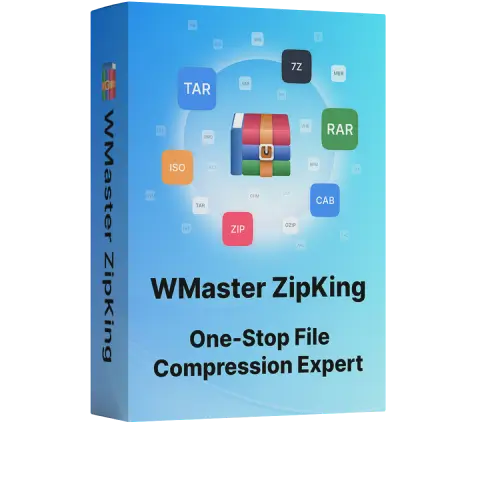
WMaster ZipKing
Compress Word Files in Bulk for Free Without Quality Loss
- Hyper Compression:Easily reduce Word file sizes by up to 78.4% without losing their quality.
- Bulk Compression Support:Compress Word and other office files like PPT, PDF, Excel up to 100 KB in bulk with 1 click.
- Advanced AI Algorithms: Zip and unzip over 61 file formats at high speed by using parallel processing systems.
- Split and customize large files:split larger files into smaller, separate files with custom size option.
- Built-in Preview:Navigate and double-click to preview your compressed file's content without decompressing it.
How to Reduce the File Size of Word Document by WMaster ZipKing
Method 1: Right-Click Smart Compression
Step 1: Install WMaster ZipKing:Proceed to the WMaster ZipKing's website and click on "Try it Free" to download the setup, open the "ZipKing.exe"and then follow the instructions to install the tool.
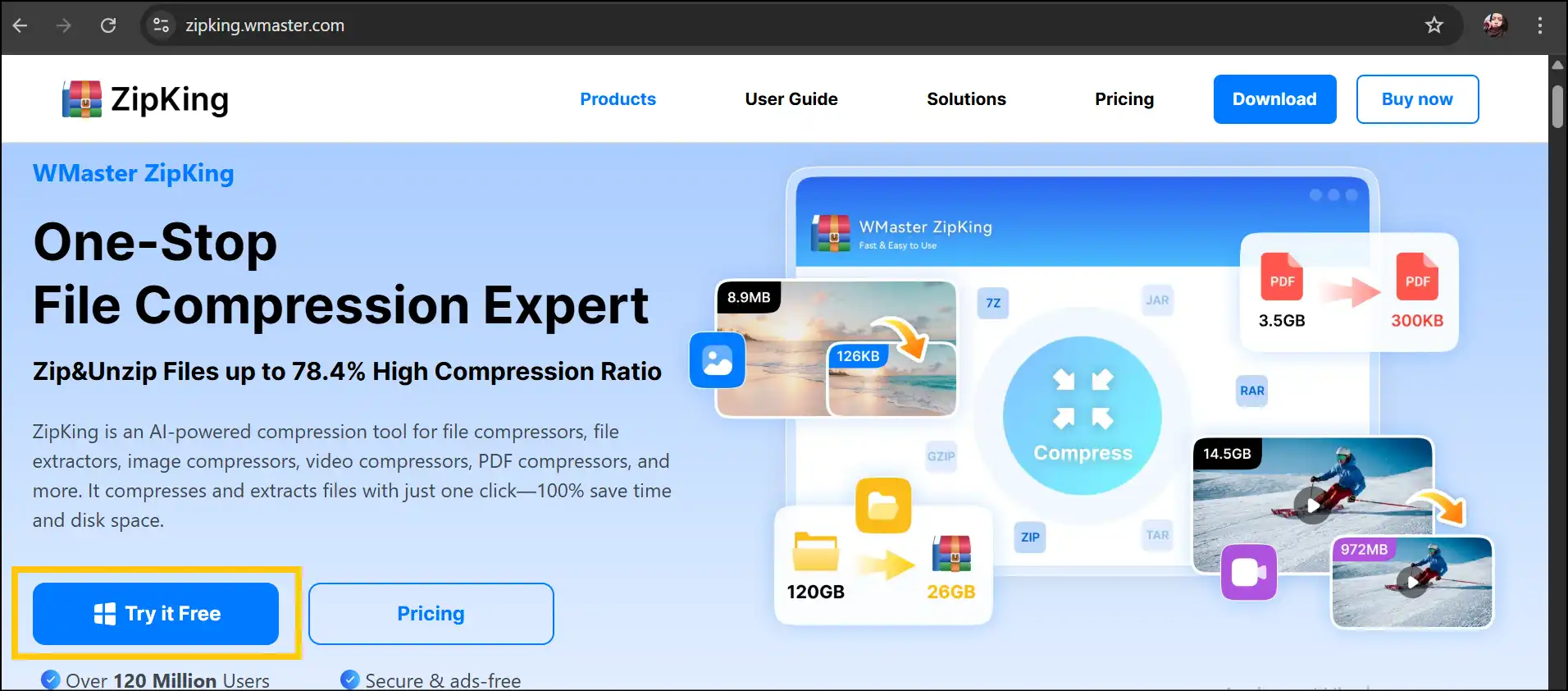
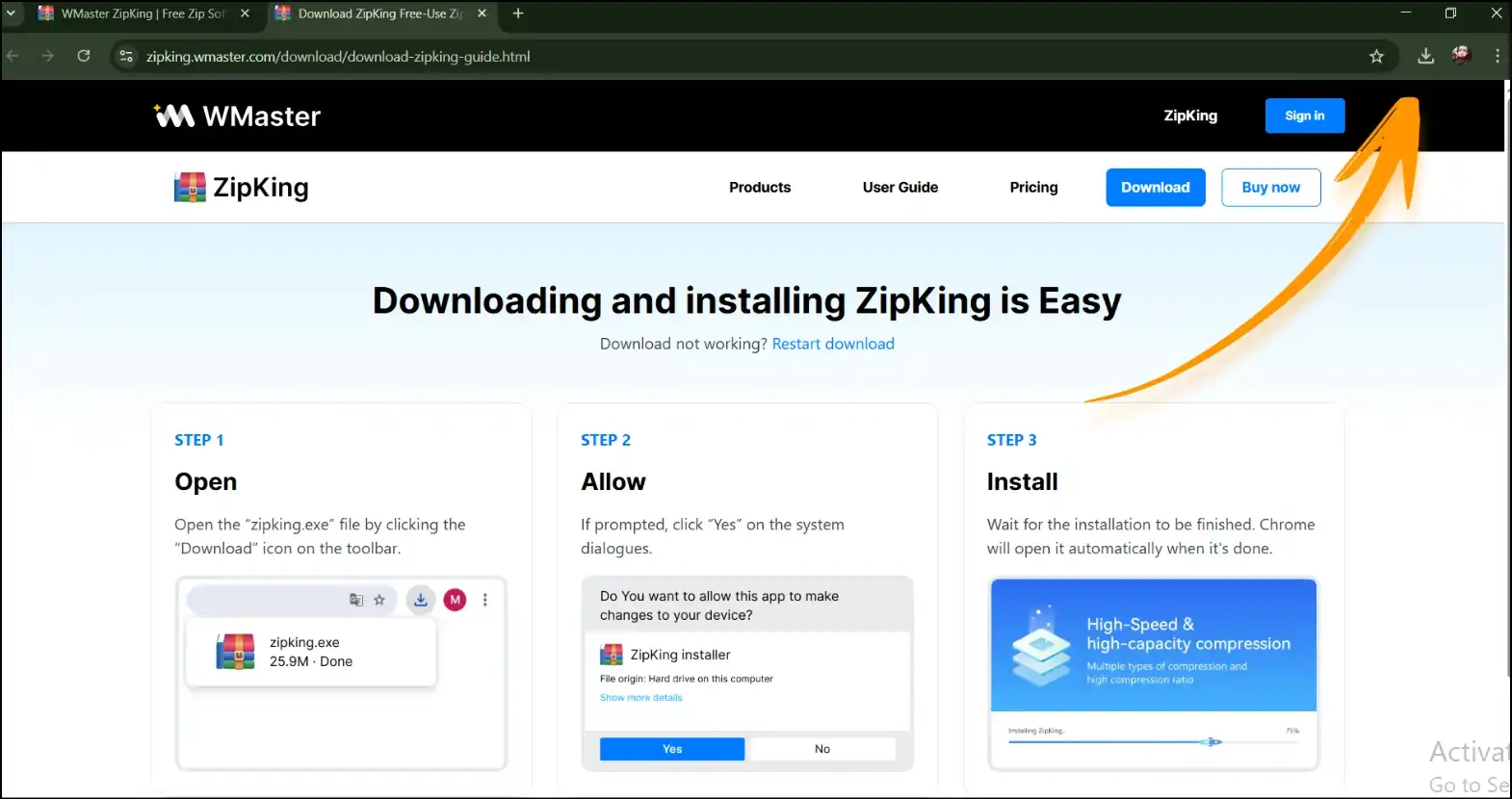
Step 2:Follow Right-Click Steps: After the tool is installed, locate your Word file and right-click on it. Now select "Word Compression" from the dropdown menu, and then choose the compression level for the compressed Word file and tap on "Compress".
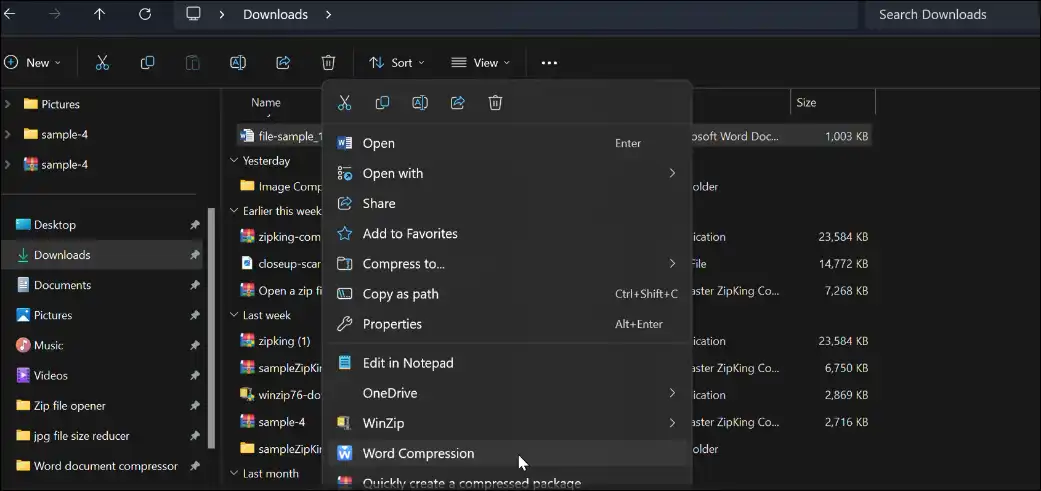
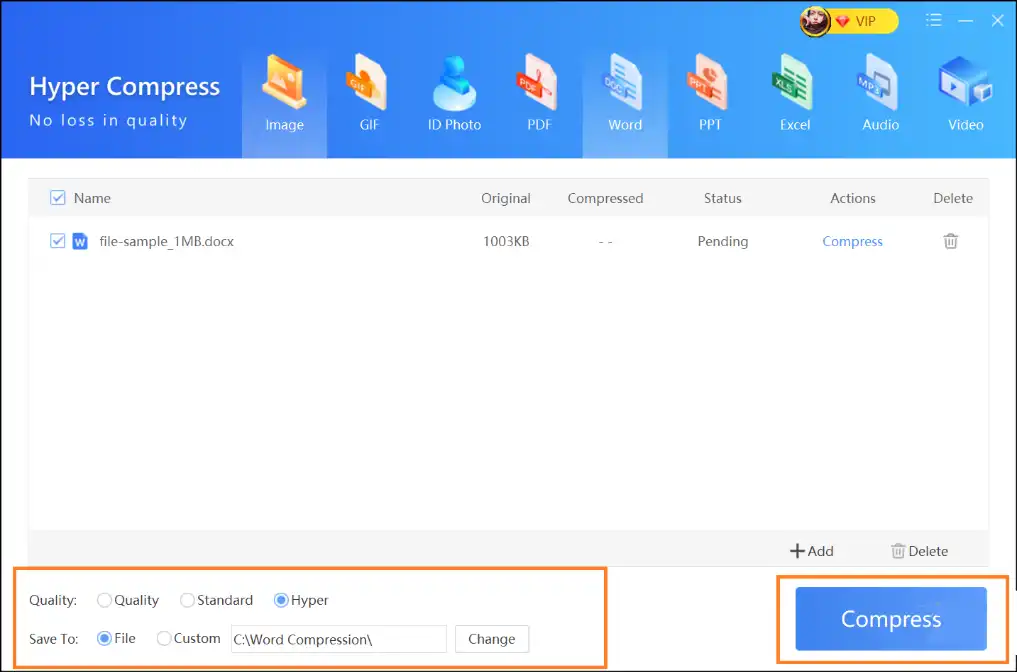
Step 3: Access the Compressed Word File: After the lossless compression process, you can preview and use the newly created compressed Word file.
💡Tips:Open the original Word file and the compressed version one by one to compare them.
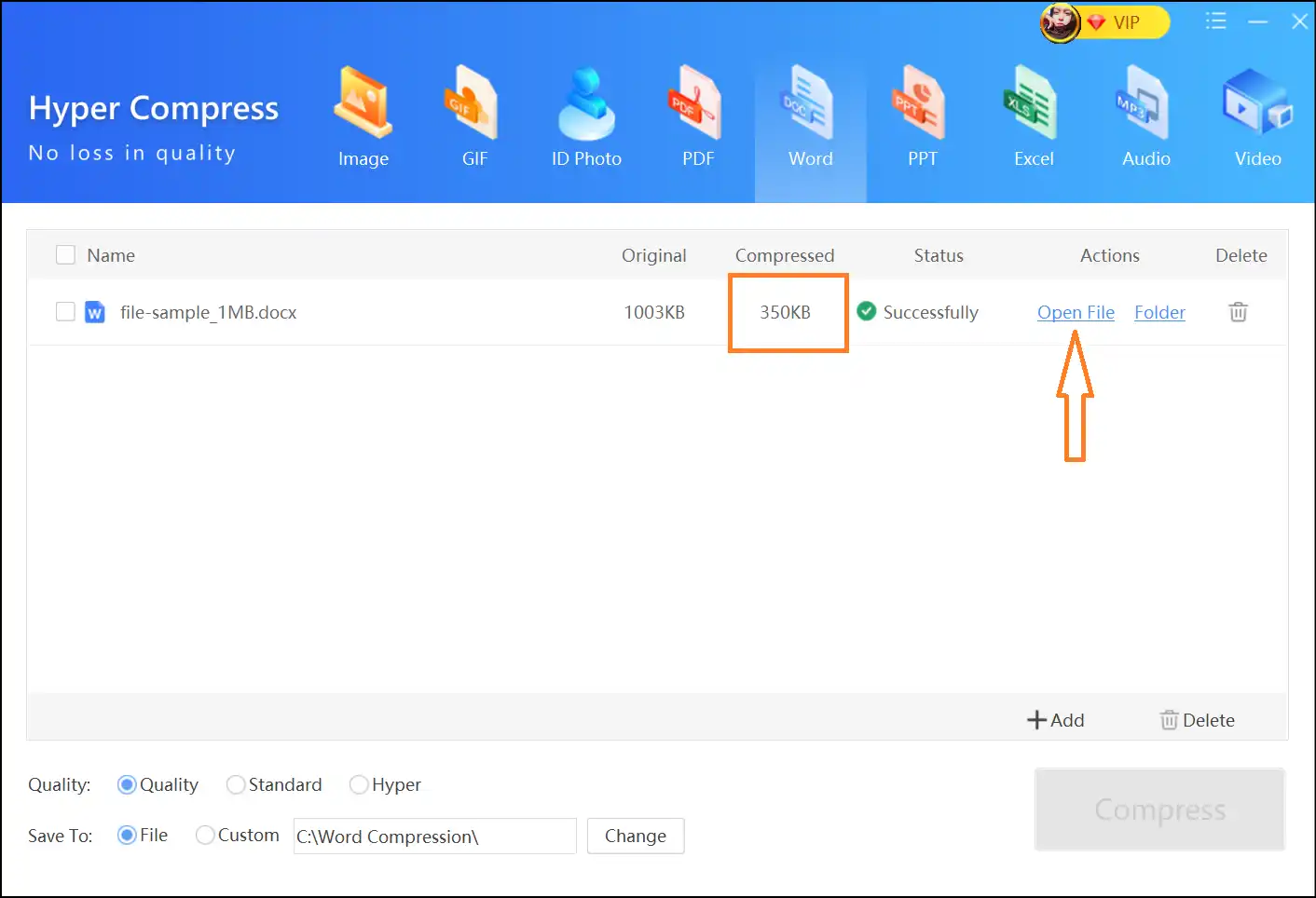
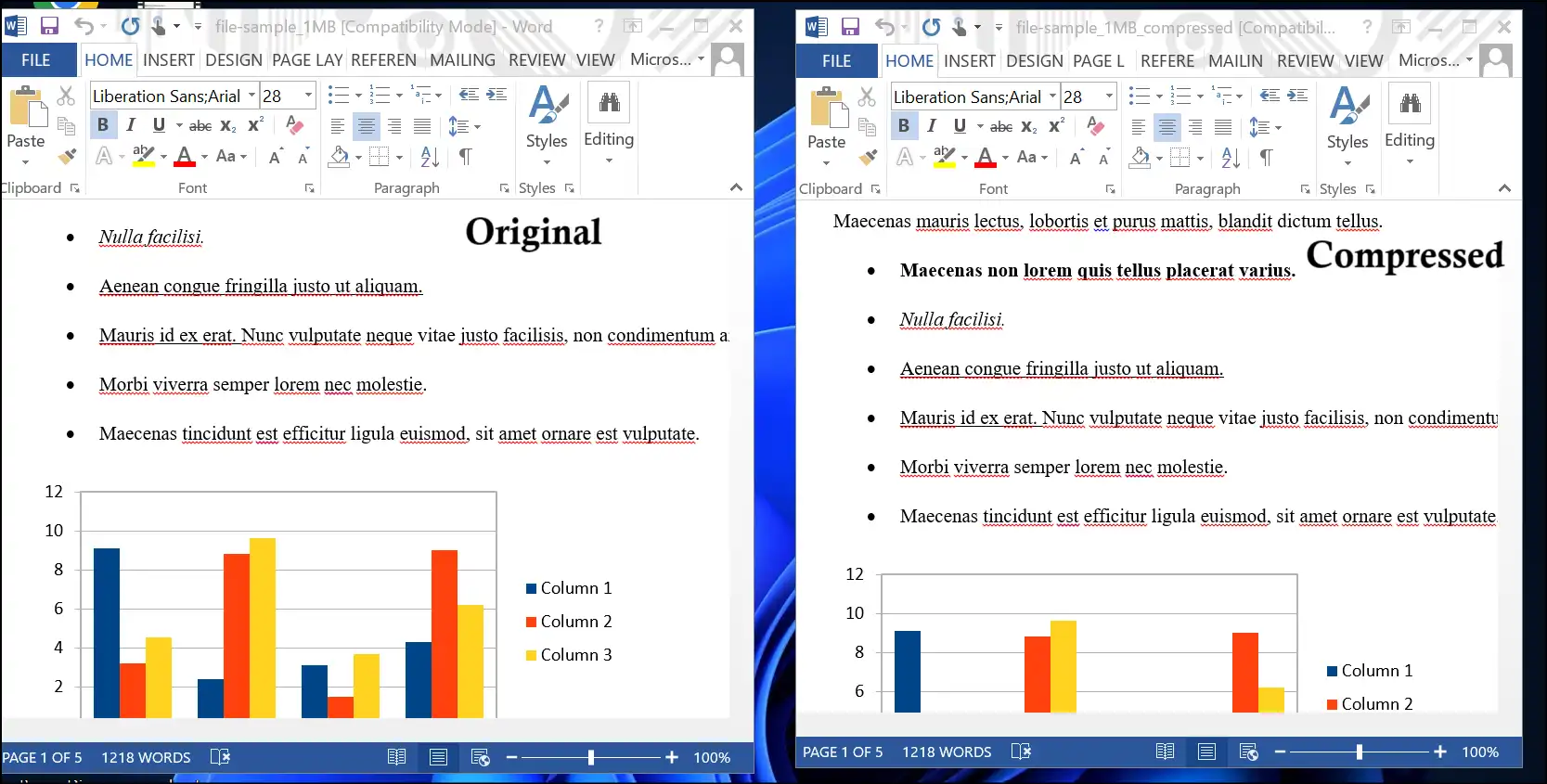
Method 2: Launch the App Compression
Step 1: Launch the ZipKing: Follow the first method's step 1 to install the tool. Launch the ZipKing on your desktop, and press "PDF Compress" to compress Word file.
💡Tips:Compress office files, videos, and images with ZipKing with a high compression rate of 78.4% for multiple large multimedia format types.
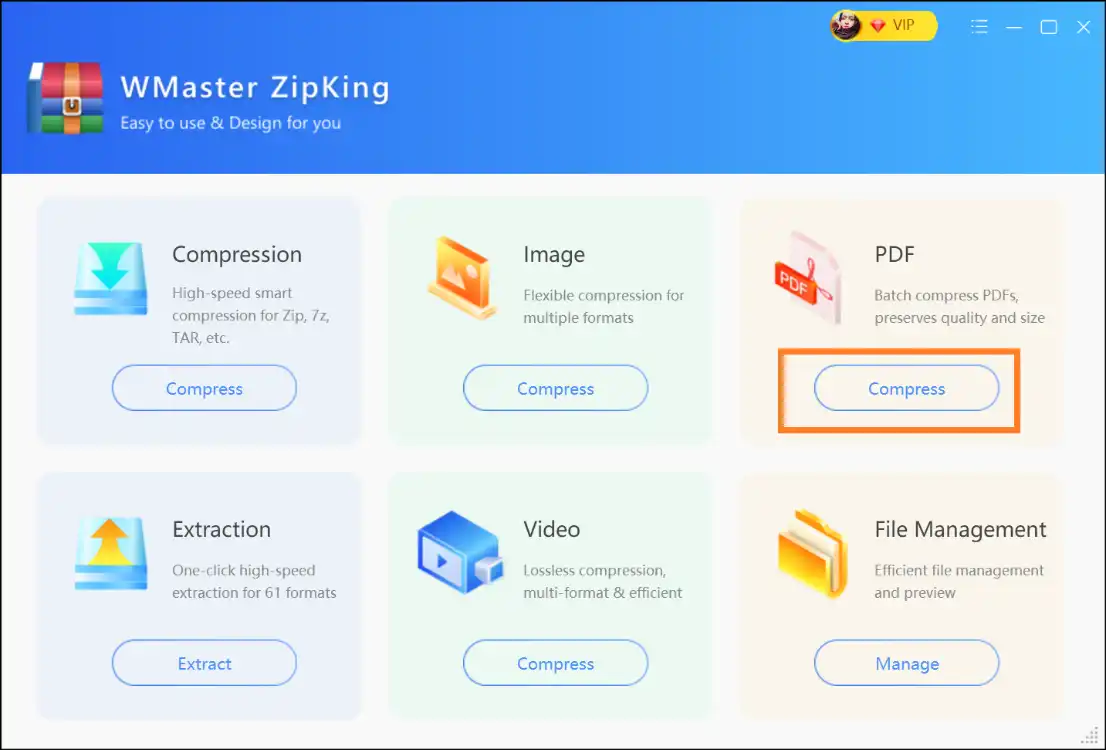
Step 2:Select Word File to Compress: Click on "Word",then click "Add File" or drag your Word file, which you want to compress.

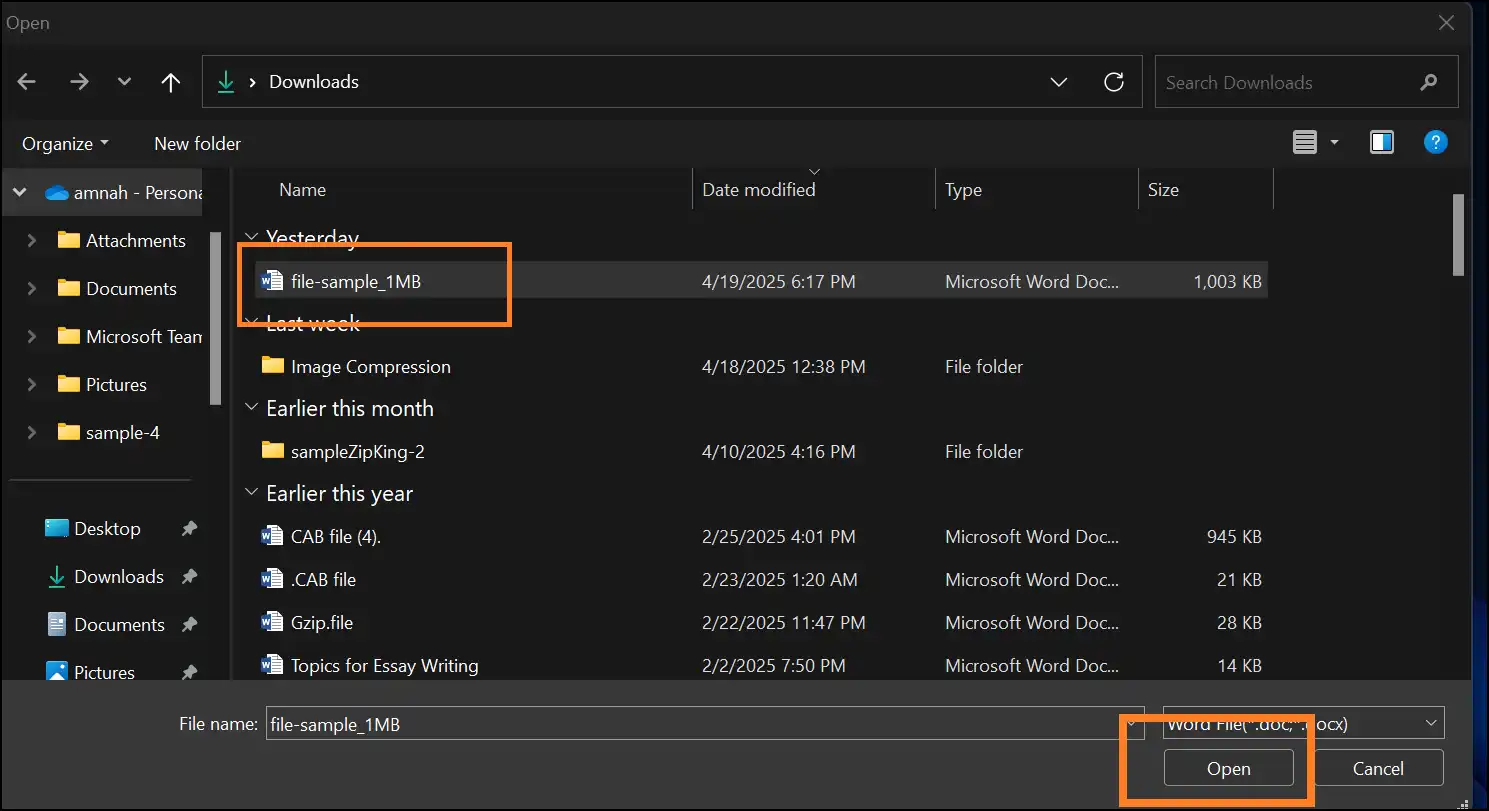
Step 3: Choose Compression Level:Once your Word file is uploaded, pick any lossless compression level for your compressed Word file and press "Compress".
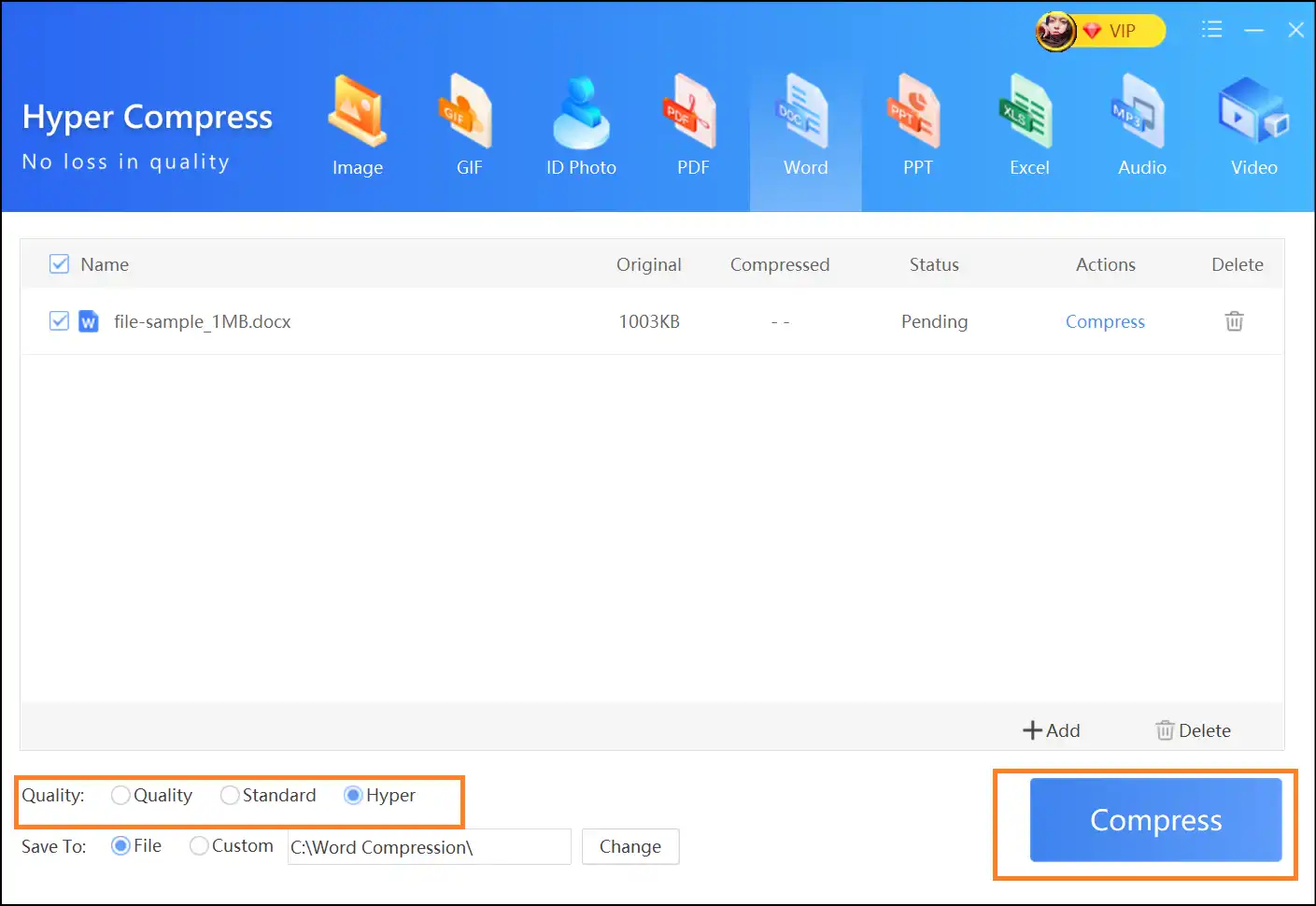
Step 4: Access the Compressed File:After the compression process, you can access and preview the content of the Word file. Now, open the original and the compressed version of the Word file to compare.
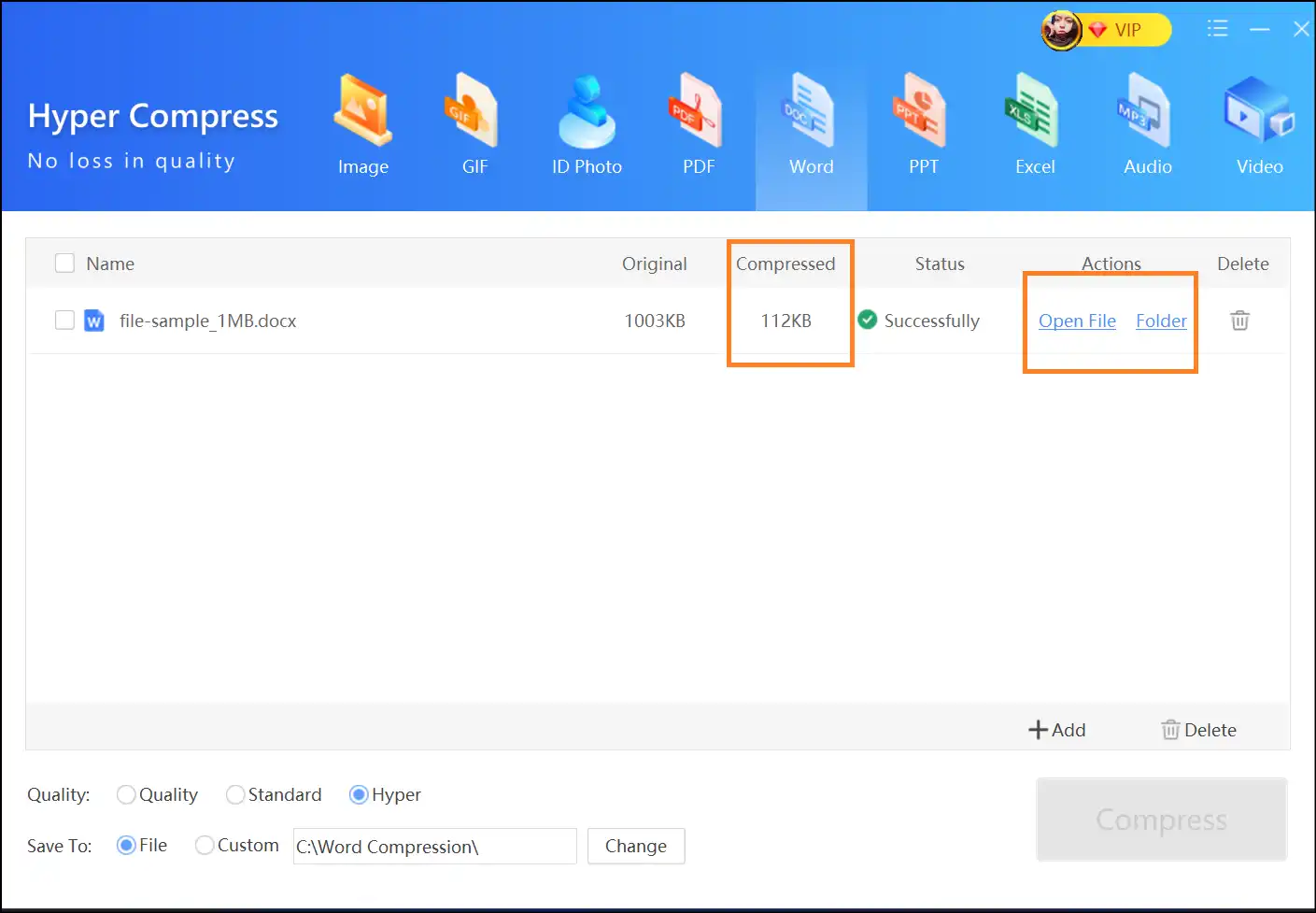
💡Tips:Click "Open File" to open the compressed Word file directly or tap on "Folder" to view the folder that holds your compressed Word file. You can also directly navigate the folder to access compressed files anytime you need.
Part 4: Compress Word Files Online Quickly
If you are in a hurry and don't want to download any desktop tool, here we recommend an online tool that can compress a Word file with a few clicks. Among the most well-known websites, Smallpdf offers several basic document and PDF solutions. It's fast, and the free version allows you to compress Word files online for quicker sharing and storage.
Guide to Compress Word File Online by Smallpdf
Step 1: Visit and upload the file.Proceed to the official website to compress the Word file with smallPDF. Click "CHOOSE FILES" to select the file, or drop your Word file directly to upload it on the online compression tool.
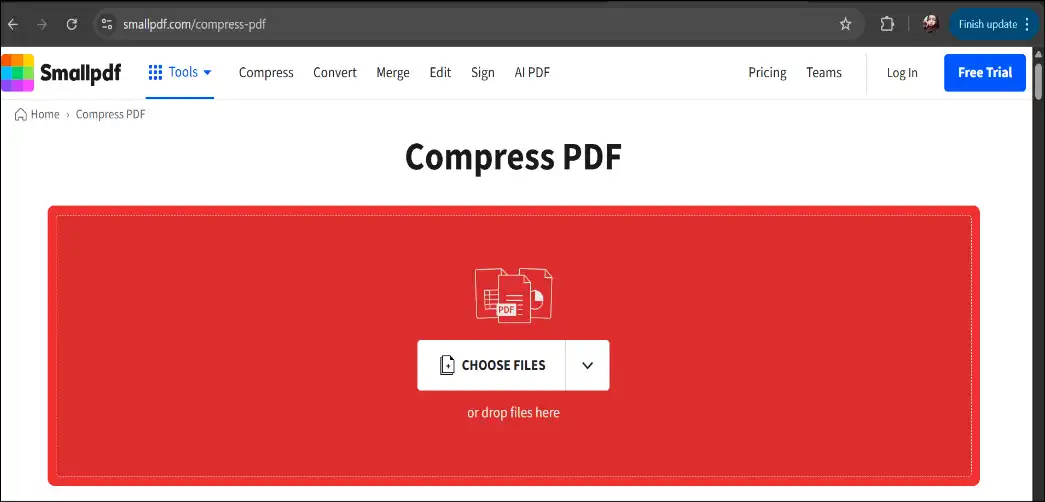
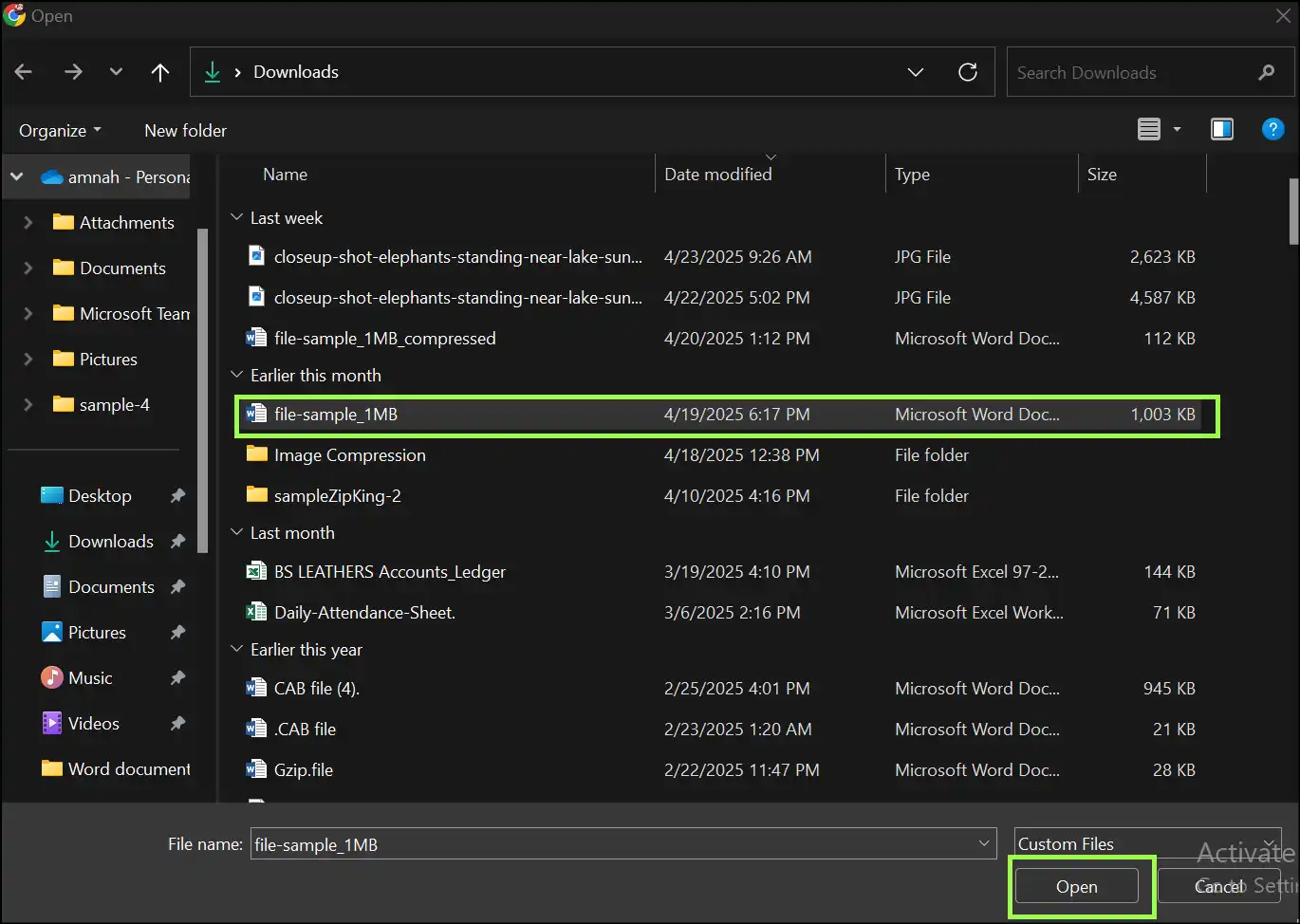
Step 2. Start the Compression: In the free version, select "Basic" and then "Compress" to start the compression. After process completion, tap on "Export As" and then "Word (.docx) "to convert your PDF version into a Word version again.
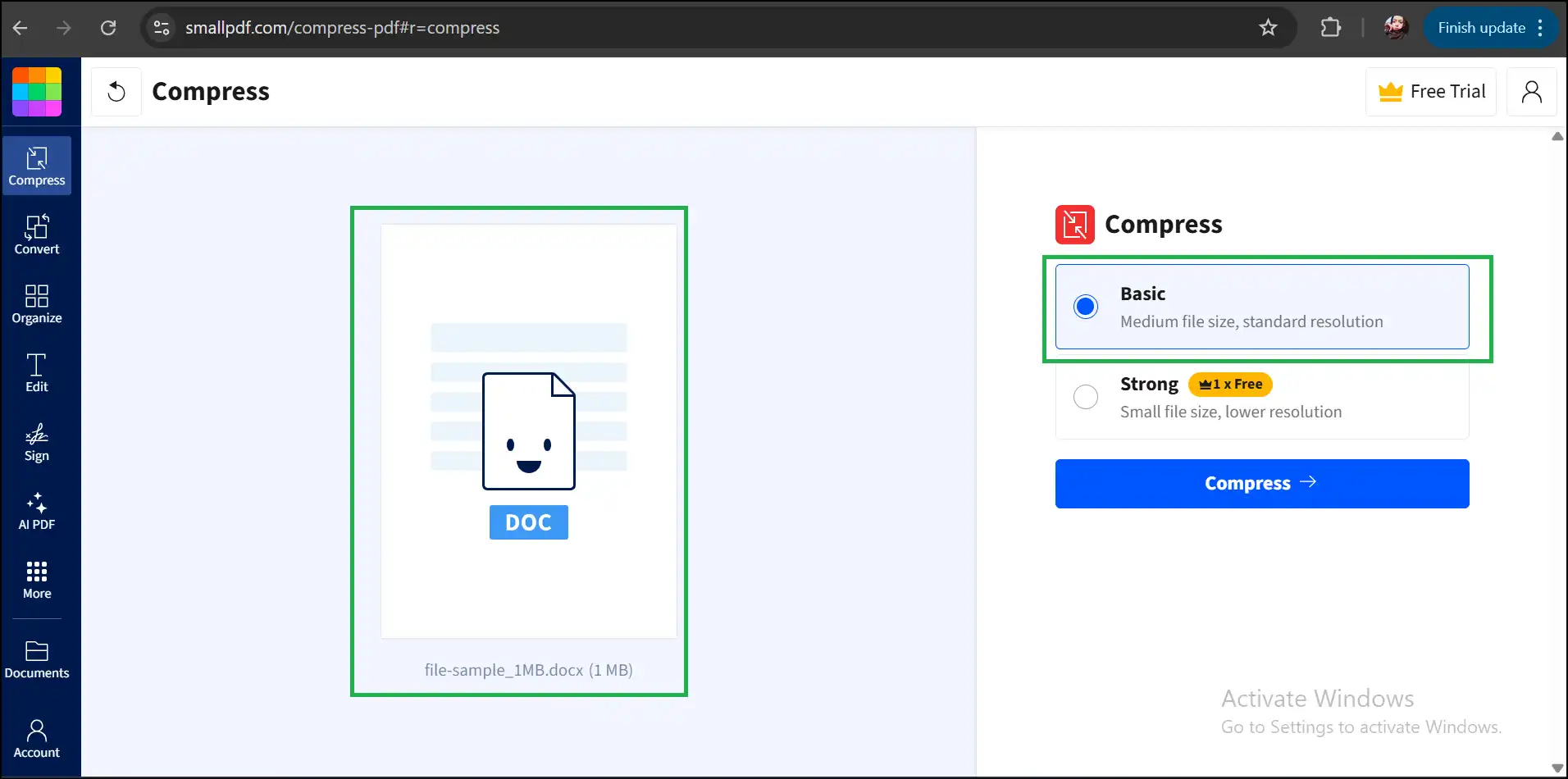
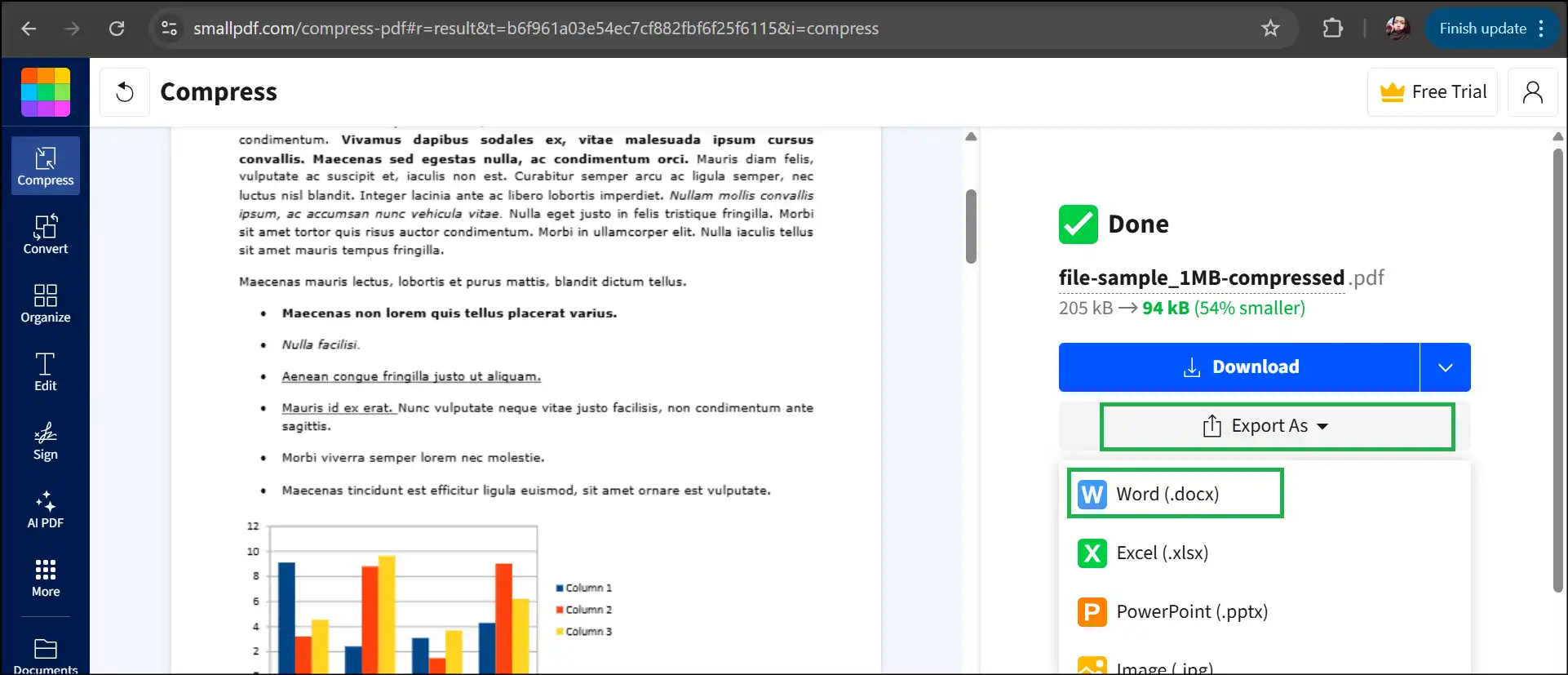
Step 3. Download and Access File:Now, download your compressed Word file and access its content as usual.
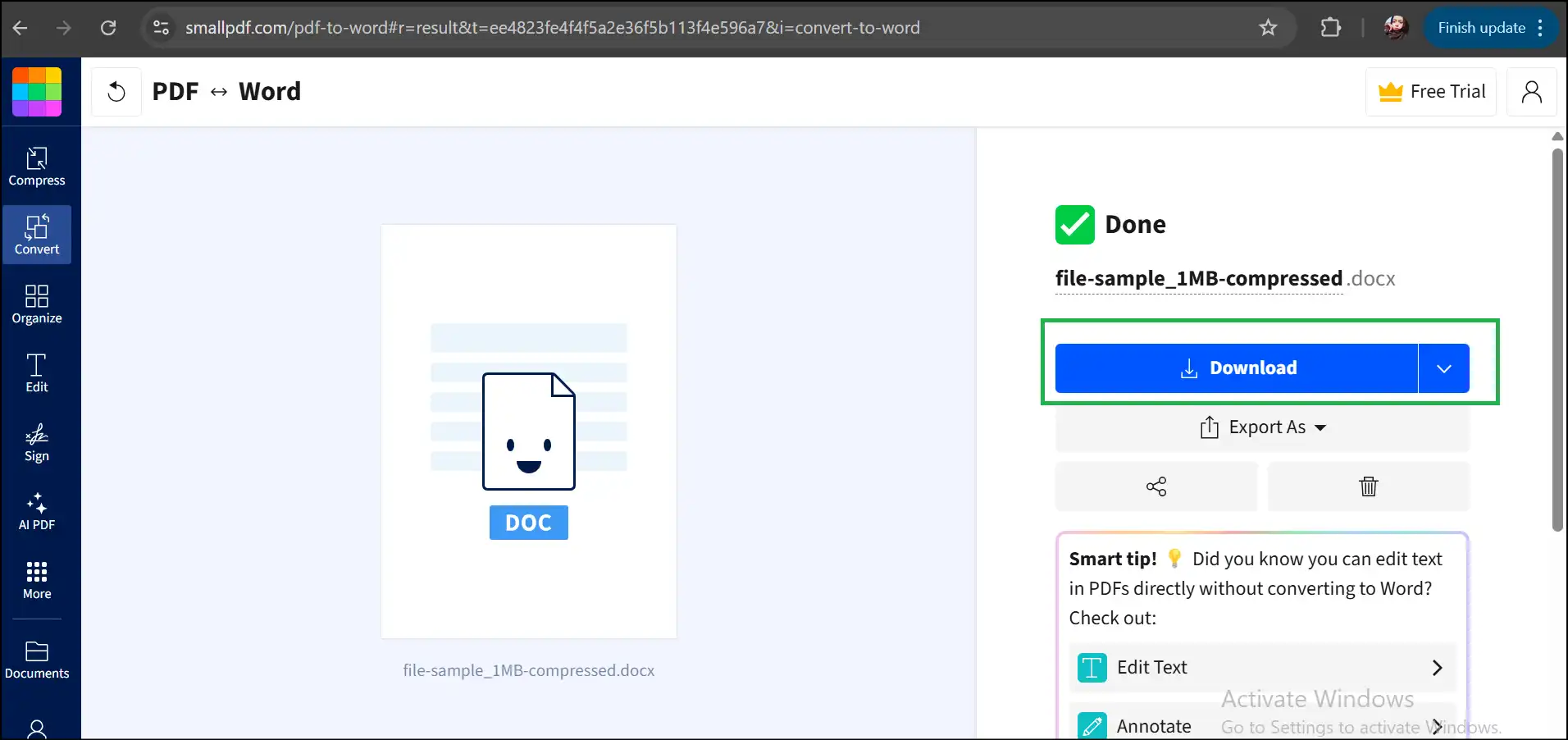
Pros and Cons of Using Smallpdf to Compress Word File
Pros:
- Easy-to-understand and beginner-friendly interface.
- User does not need to download or install anything.
- Operates on all operating system devices.
Cons:
- Need paid version for additional features.
- The free plan allows limited daily file processing.
- Uploading sensitive data may raise privacy concerns.
Part 5: How to Compress Word File Size With 6 Other Useful Ways
Dealing with large Word files requires knowledge of quick file size reduction. Each of the numerous techniques you can attempt provides a unique approach to reduce the Word document without dropping its quality. This part will guide you through six practical techniques to reduce the size of your Word file and make it more manageable and shareable.
Way 1: Compress Word File by Converting .doc Format to .docx Format
Converting older file formats, such as .doc, to the newer .docx file format is one uncomplicated yet powerful way to shrink your Word document. Being more compact and effective, the .docx format is a fantastic method to save space.
Steps to convert .doc to .docx:
Step 1. Open the document: Open your .doc file in Microsoft Word, navigate to the top-left corner, and click on the "File" tab.
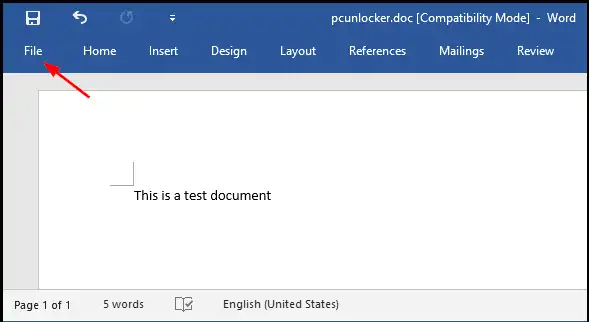
Step 2. Save As: From the file dropdown menu, select "Save As," and then click on "Browse" to select the location for the compressed file.
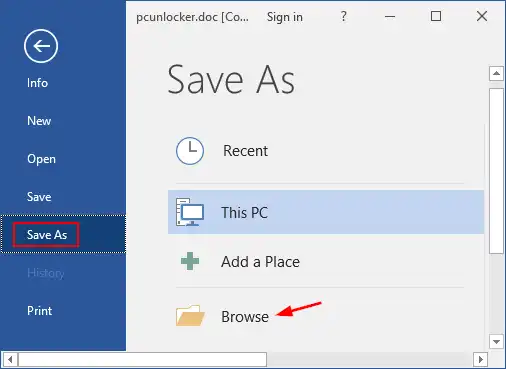
Step 3. Choose .docx Format: Select "Word Document (*.docx)"" from "Save as type" and click "Save." After saving, your .doc file format will be converted to the latest Word version, .docx, quickly.
💡Tips:Navigate to the folder where you have saved the original ".doc" and compressed version ".docx file." Compare the file size and results (by opening both files), and delete the .doc file to save disk space.
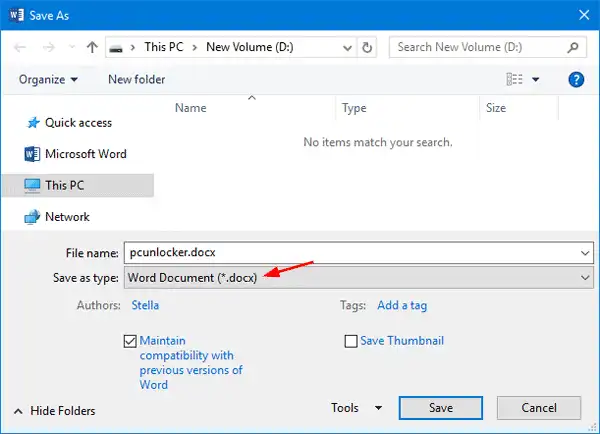

Way 2: Compress Word File by Inserting Pictures Directly Without Copying and Pasting
Images tend to be bigger when you paste them into your Word document. To reduce the file size, consider embedding photos rather than pasting them straight into your Word document.
Steps to Insert Pictures Directly:
Step 1. "Insert" an image into the document: Open your Word file, and in the ribbon, tap on the "Insert" tab.
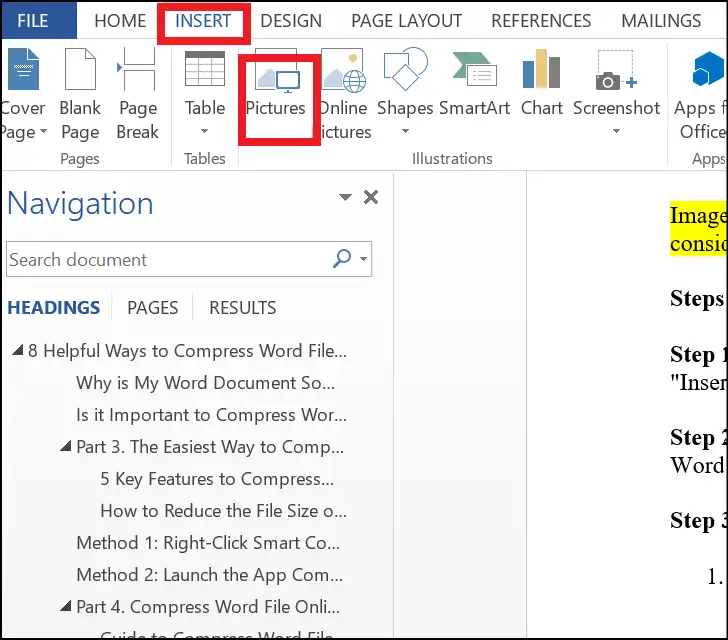
Step 2. Tap on "Pictures": Tap on "Pictures" and select the image you want to add in the Word document, and click "Insert."
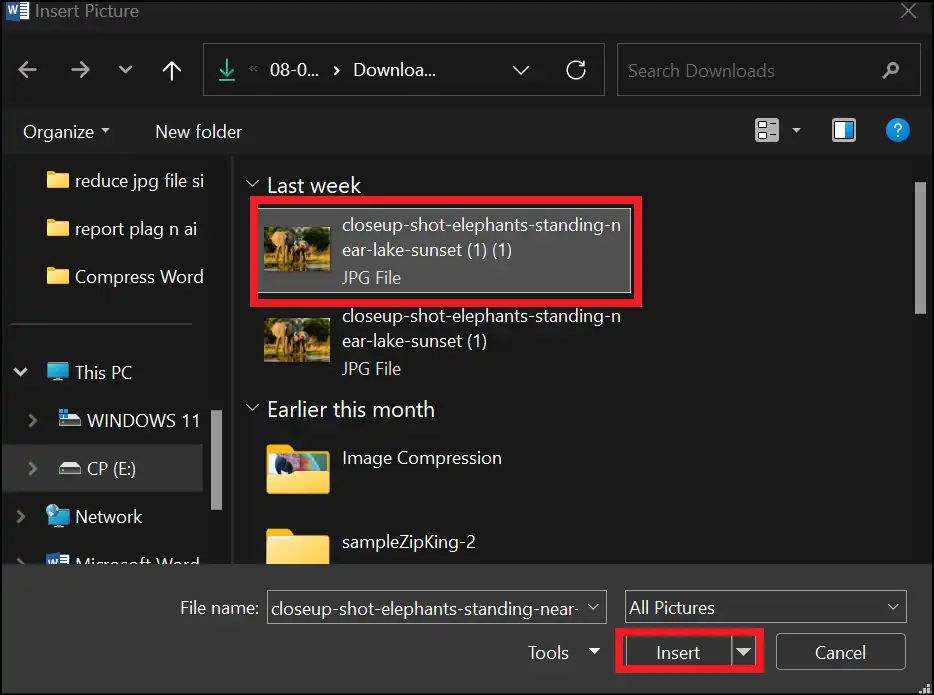
Step 3. Resize if necessary: The picture is added to the document. You may need to resize the image to let it fit in the layout.
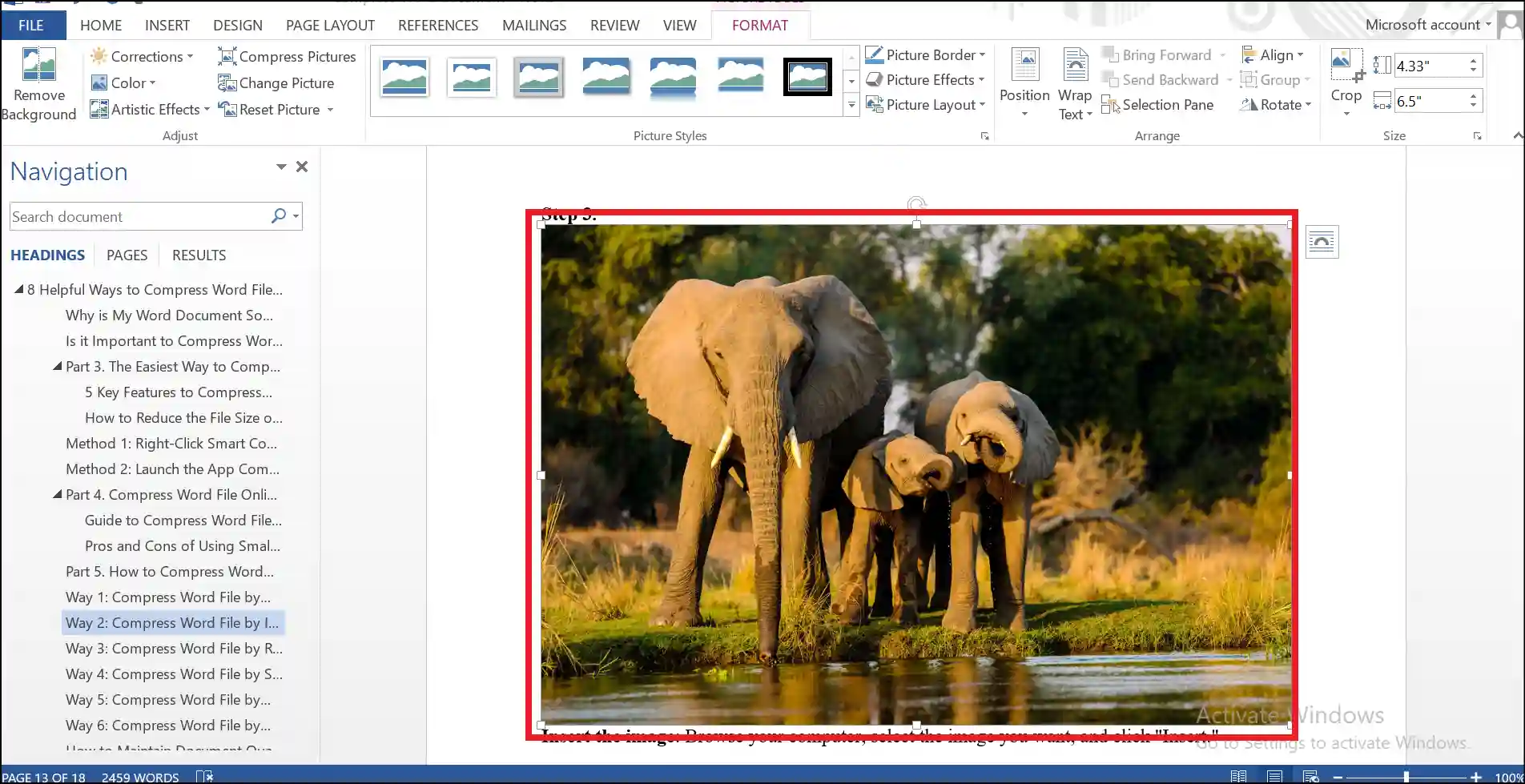
Way 3: Compress Word File by Removing Embedded Font
Embedded fonts can greatly increase the size of your Word document. Removing unneeded embedded fonts will help you to reduce the file size.
Steps to Remove Embedded Fonts:
Step 1. Move to Options: Open your Word file and click the "File" tab and then tap on "Option" from the menu.
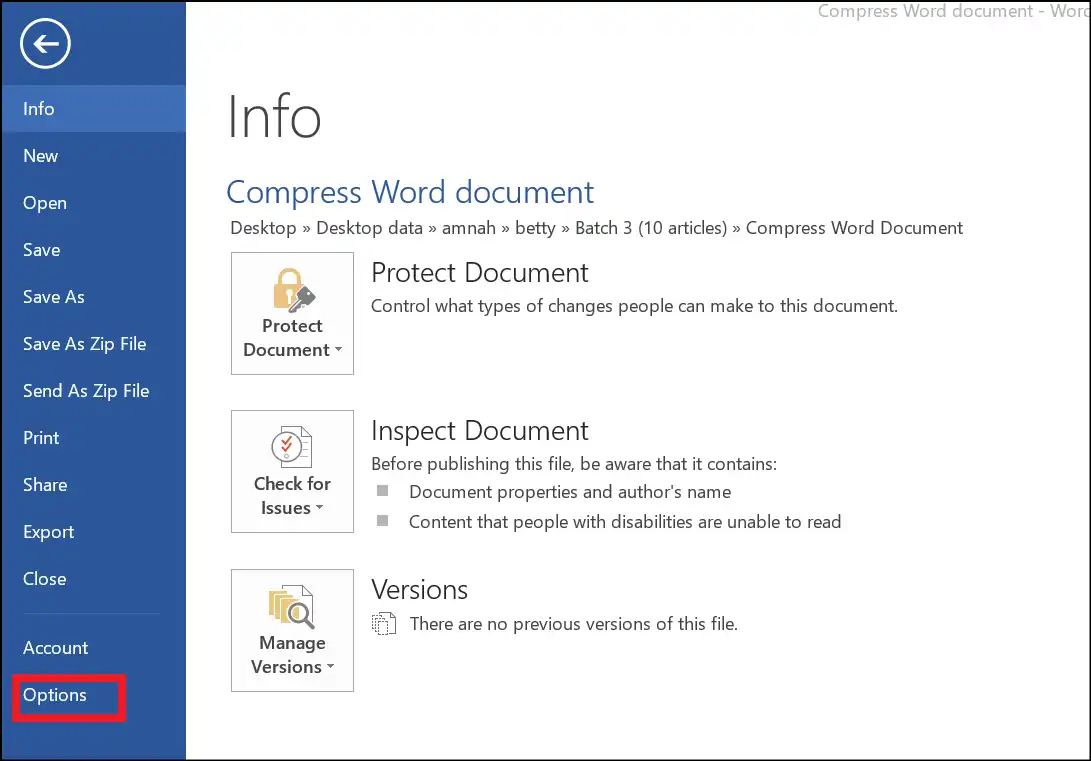
Step 2. Tap on "Save": In the "Word Options" window, click on "Save." Now uncheck the "Embed fonts in the file" that comes under "Preserve fidelity when sharing this document."
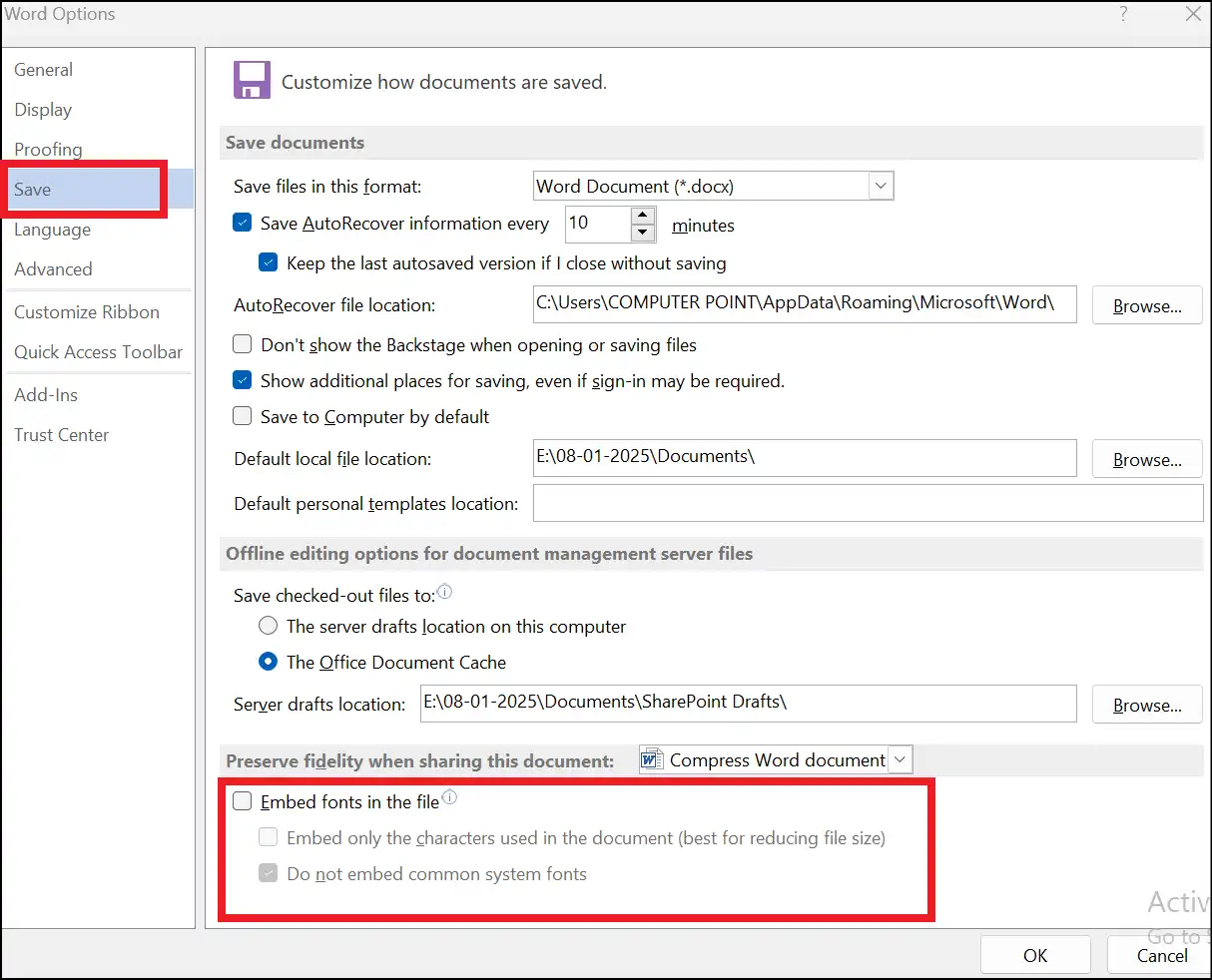
Step 3. Save the Settings: Click "OK" and save your Word document to apply the settings.

Way 4: Compress word file by Saving Images With Low Resolution
High-definition images can notably enlarge the size of your Word document. Minimizing the resolution of photos in your document is a simple approach to shrinking the size.
Steps to Save Images with Low Resolution:
Step 1. Select Image: Select the image that you want to compress in your Word file. This will open the "Picture Tools" tab on the ribbon.
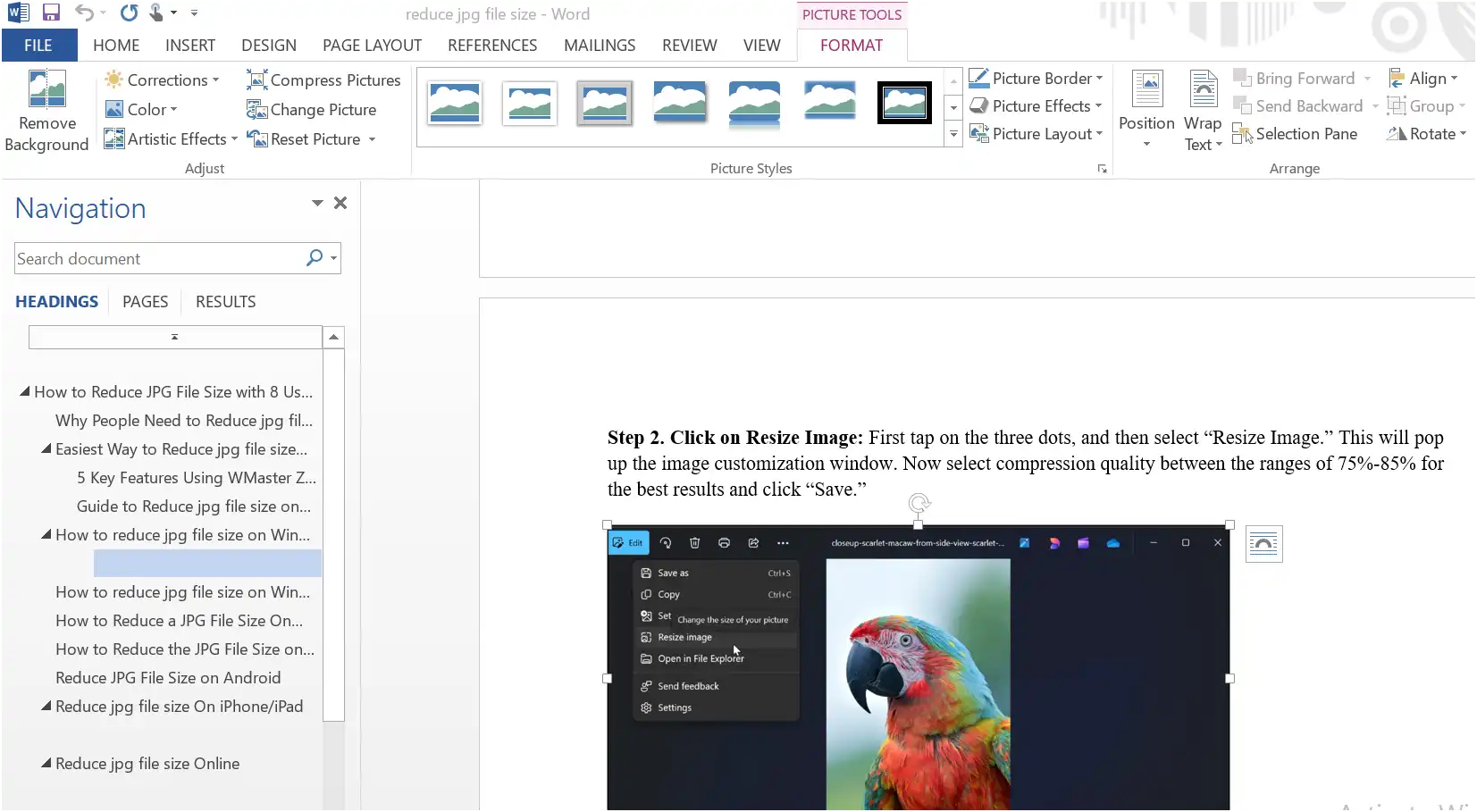
Step 2. Tap "Compress Pictures" and Set Image Resolution: Click on "Compress Pictures" in the "Adjust" group. This will open a small window; select "E-mail (96 ppi)" for the lowest resolution.
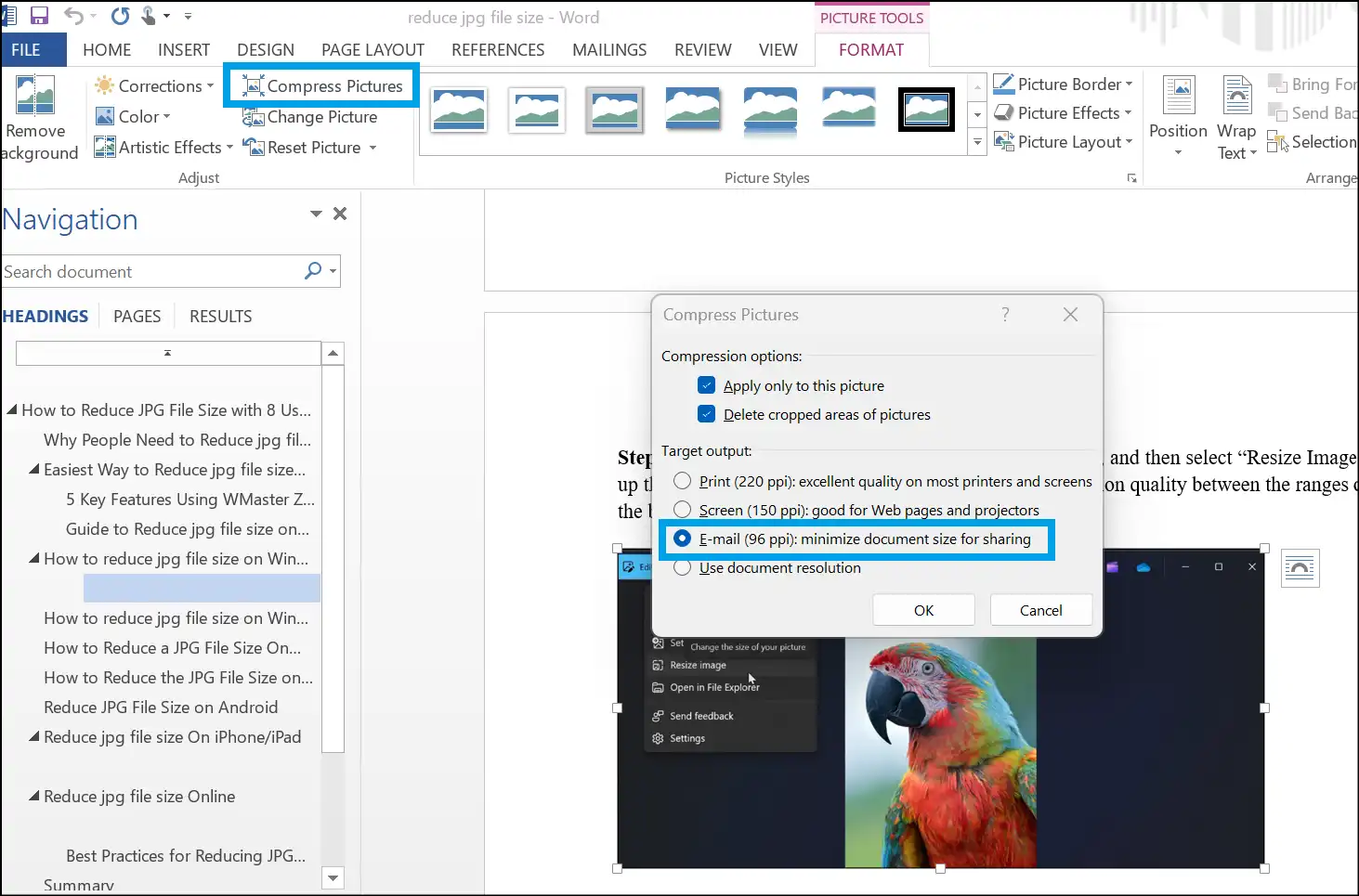
Step 3. Apply Image Settings: Click "OK" to save the image resolution settings for a smaller Word file size.
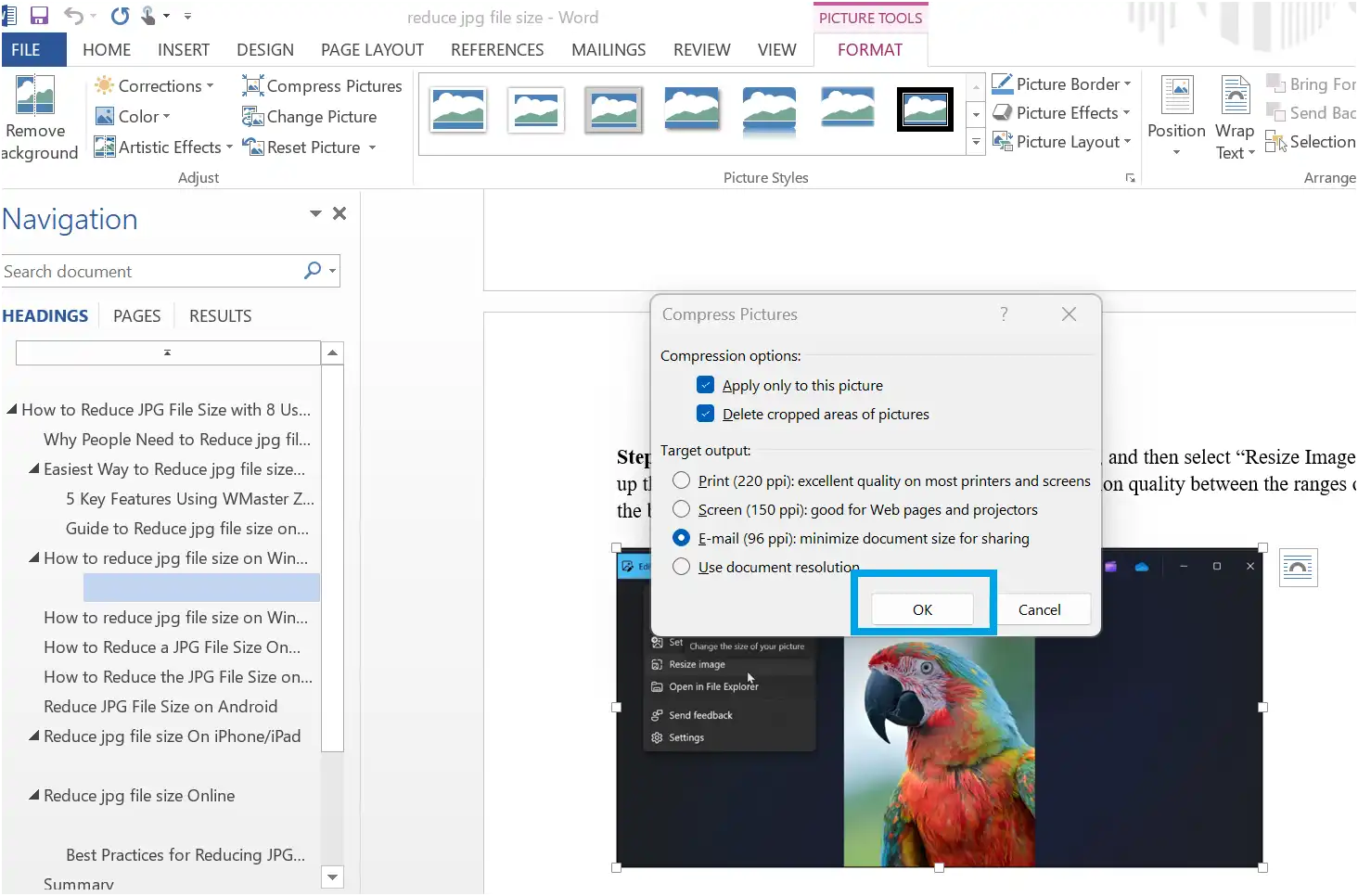
Way 5: Compress Word File by Opening a New Document
Copying all the material into a fresh Word document is another efficient way to lower the file size. This can get rid of any unneeded data or concealed formatting that might have built up with time.
Steps to Open a New Document:
Step 1. Create a new Word document: Open your Word file, go to the left corner, and tap the "File" tab. From the menu, click "New" and then tap on "blank document" to create a new Word file.
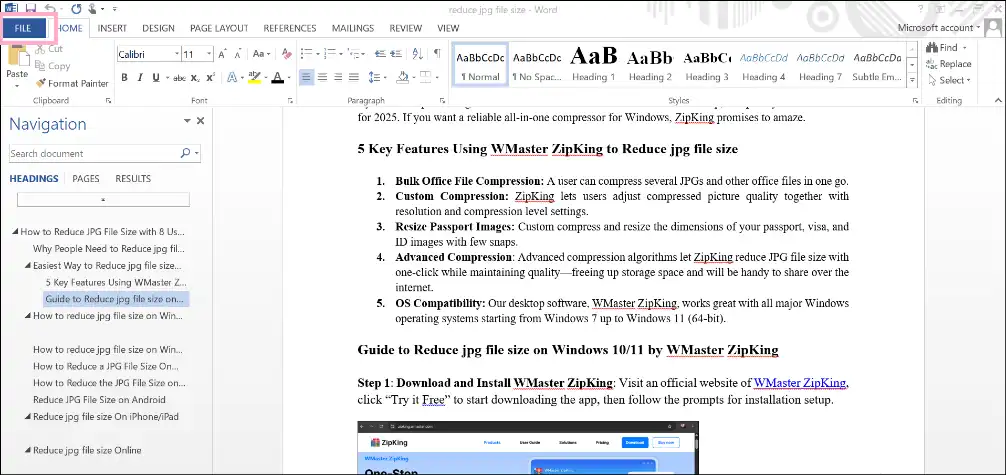
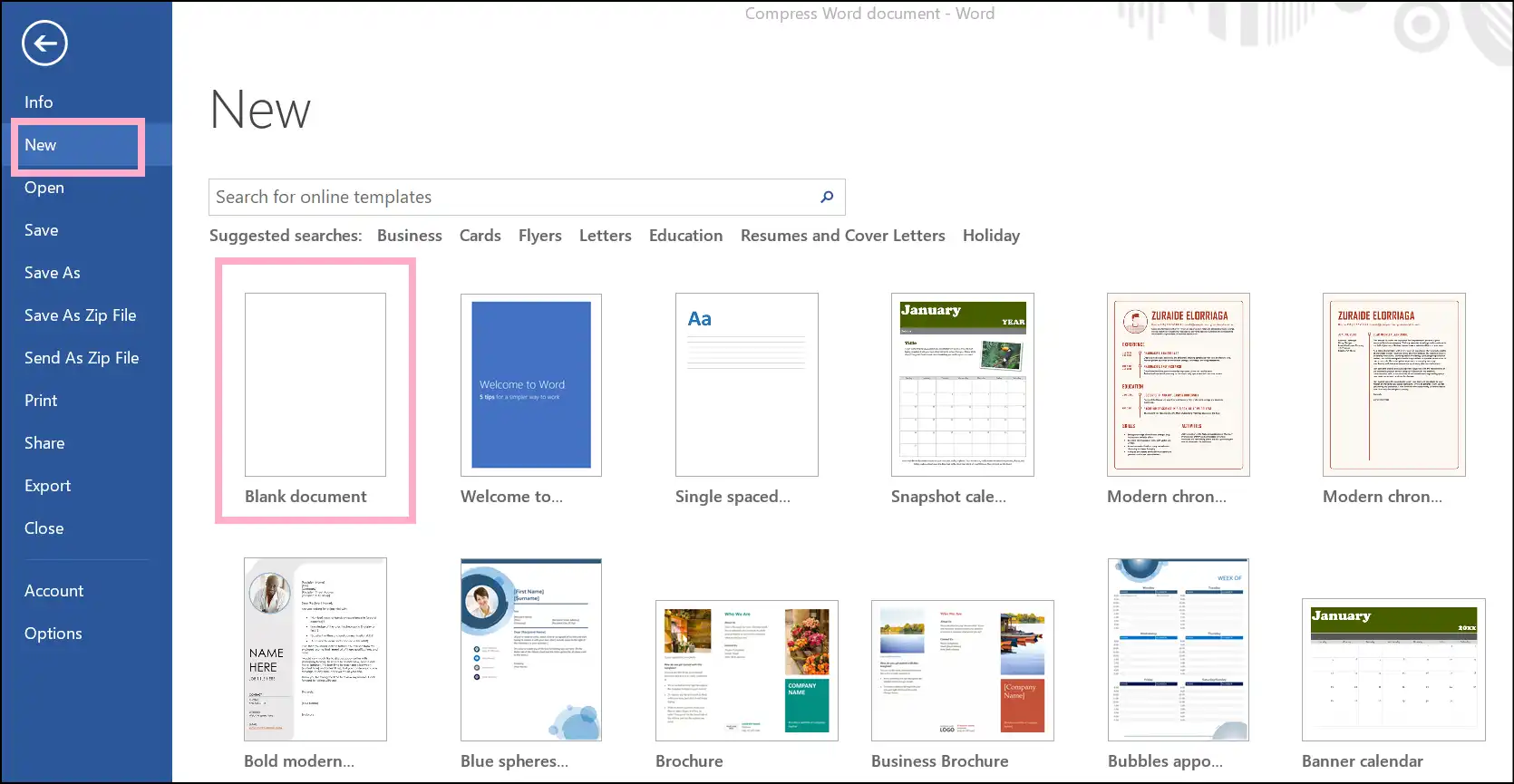
Step 2. Copy all the content: Open the original Word document to select the content, press the shortcut keys Ctrl+A, and then copy it by pressing Ctrl+C.
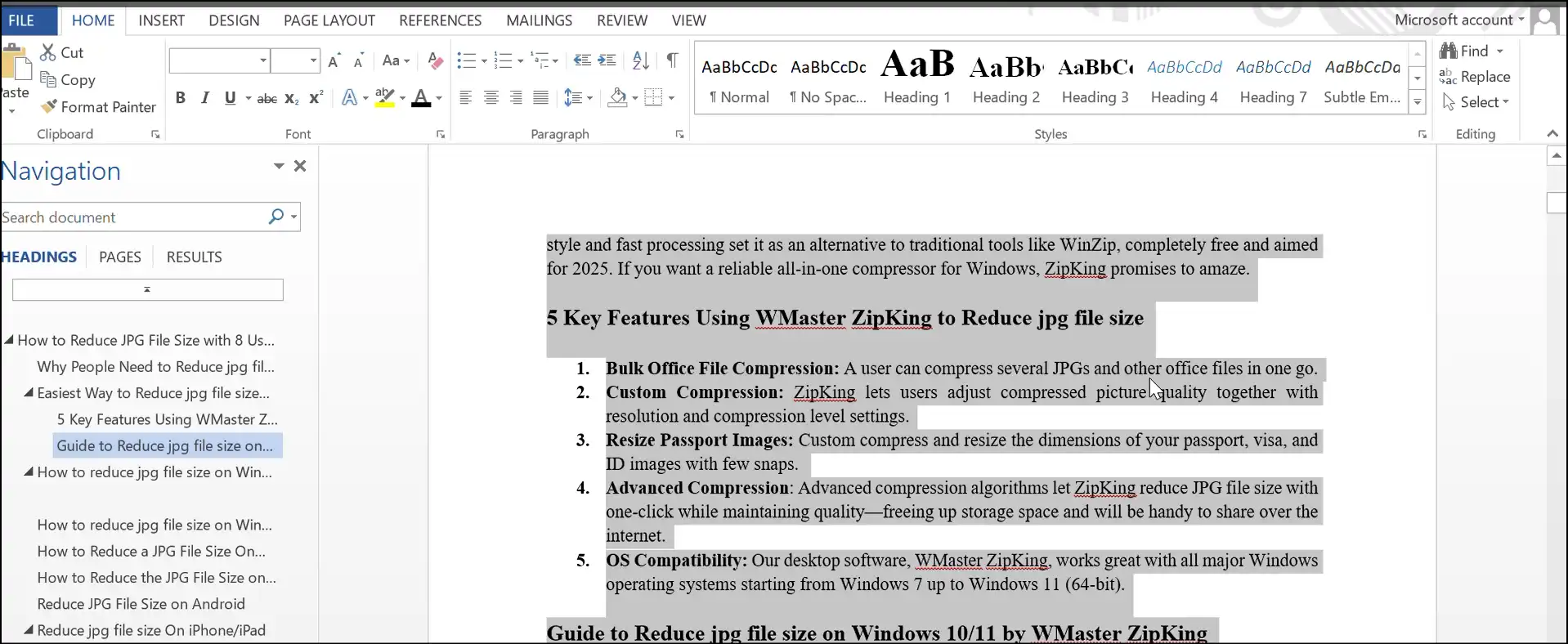
Step 3. Paste into the new document: Paste the copied content by pressing Ctrl+V into the new blank Word document. Now write a name and click "Save" to save the newly created Word file with a smaller size.
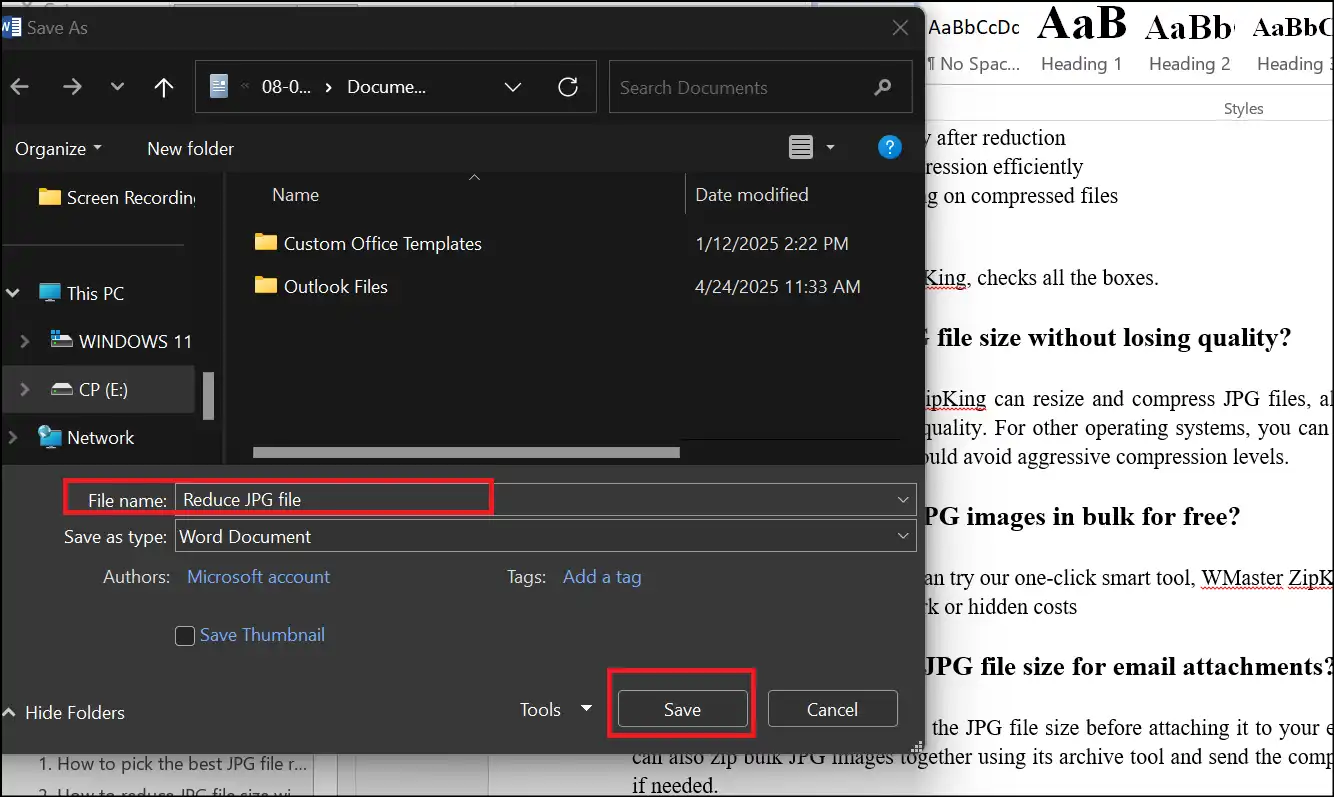
Way 6: Compress Word File by Compressing Pictures
Reduce the total file size of your Word document by compressing the images inside. Using a specific file compression program like WMaster ZipKing, which can reduce image file sizes without compromising quality, is one of the simplest methods to compress word files.
Steps to Compress Word File by Compressing Pictures Using WMaster ZipKing:
Step 1:Open WMaster ZipKing: Launch WMaster ZipKing and click "Compress" on the image box. Now select the image file you want to compress.

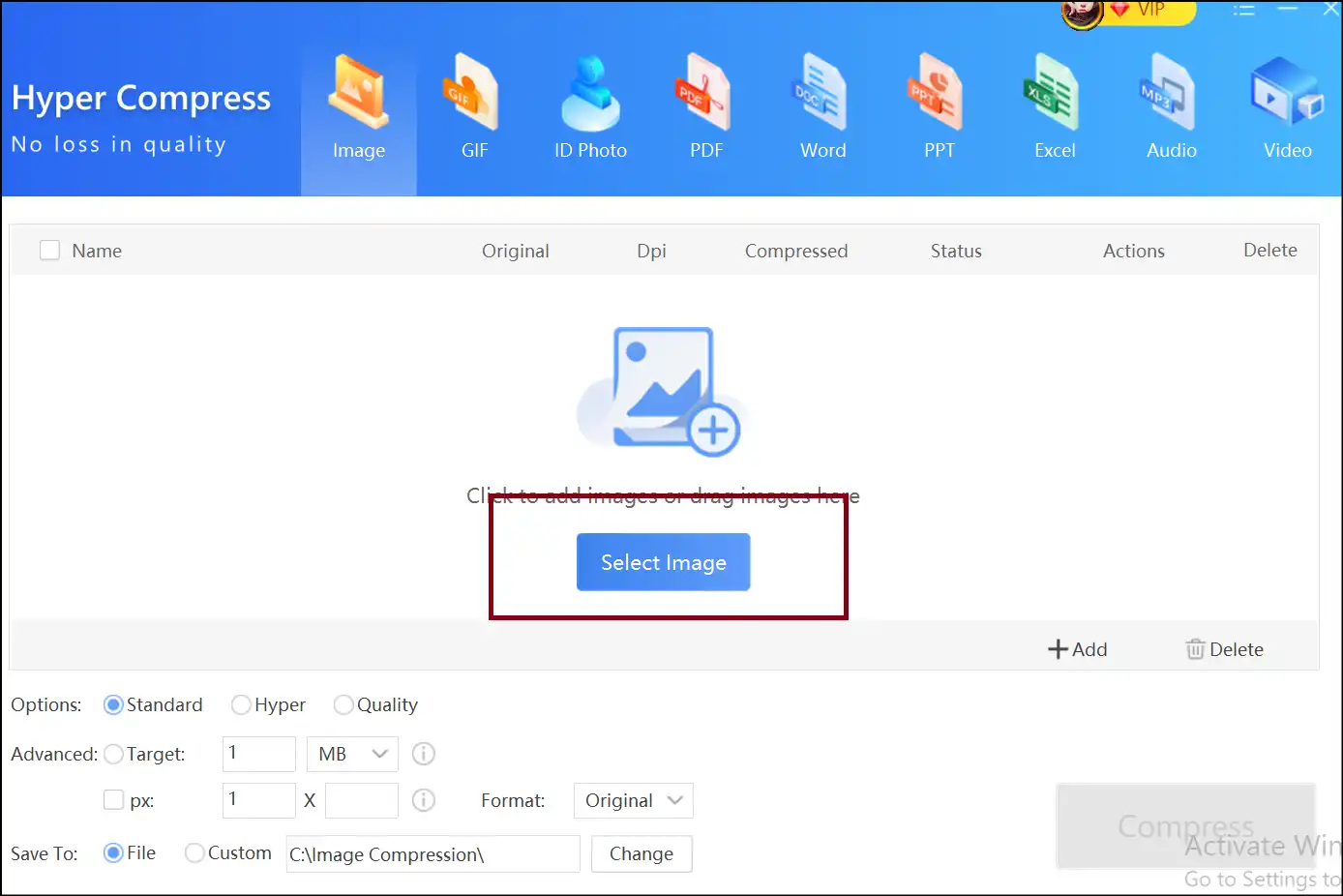

Step 2. Choose compression settings: Select and adjust the compression level for your compressed image that suits your needs. You can now access and view the compressed image directly by clicking "Open File" or navigate to the folder containing the compressed image.
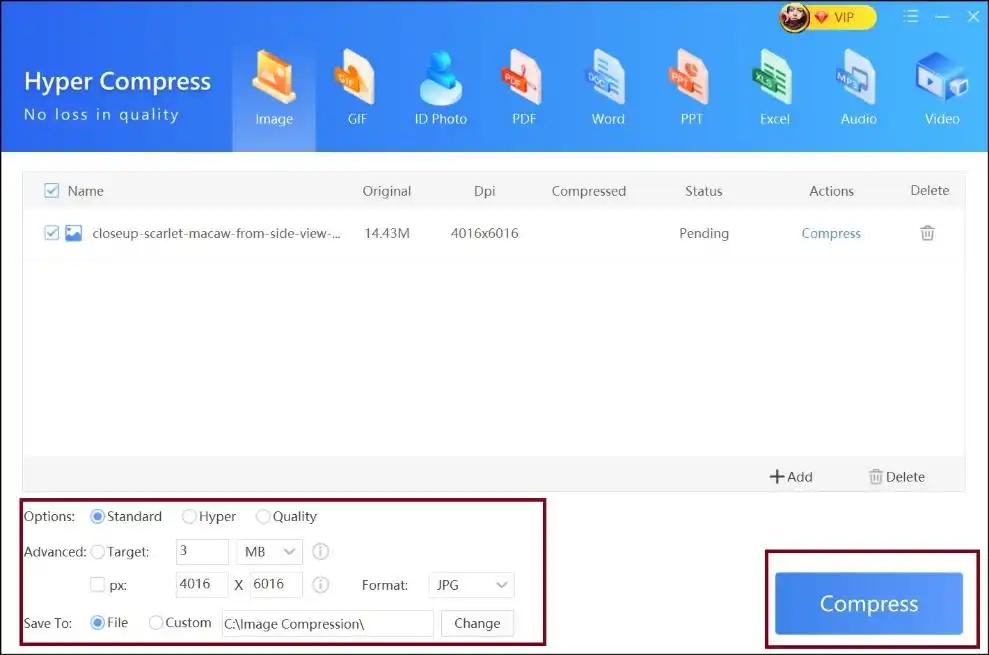
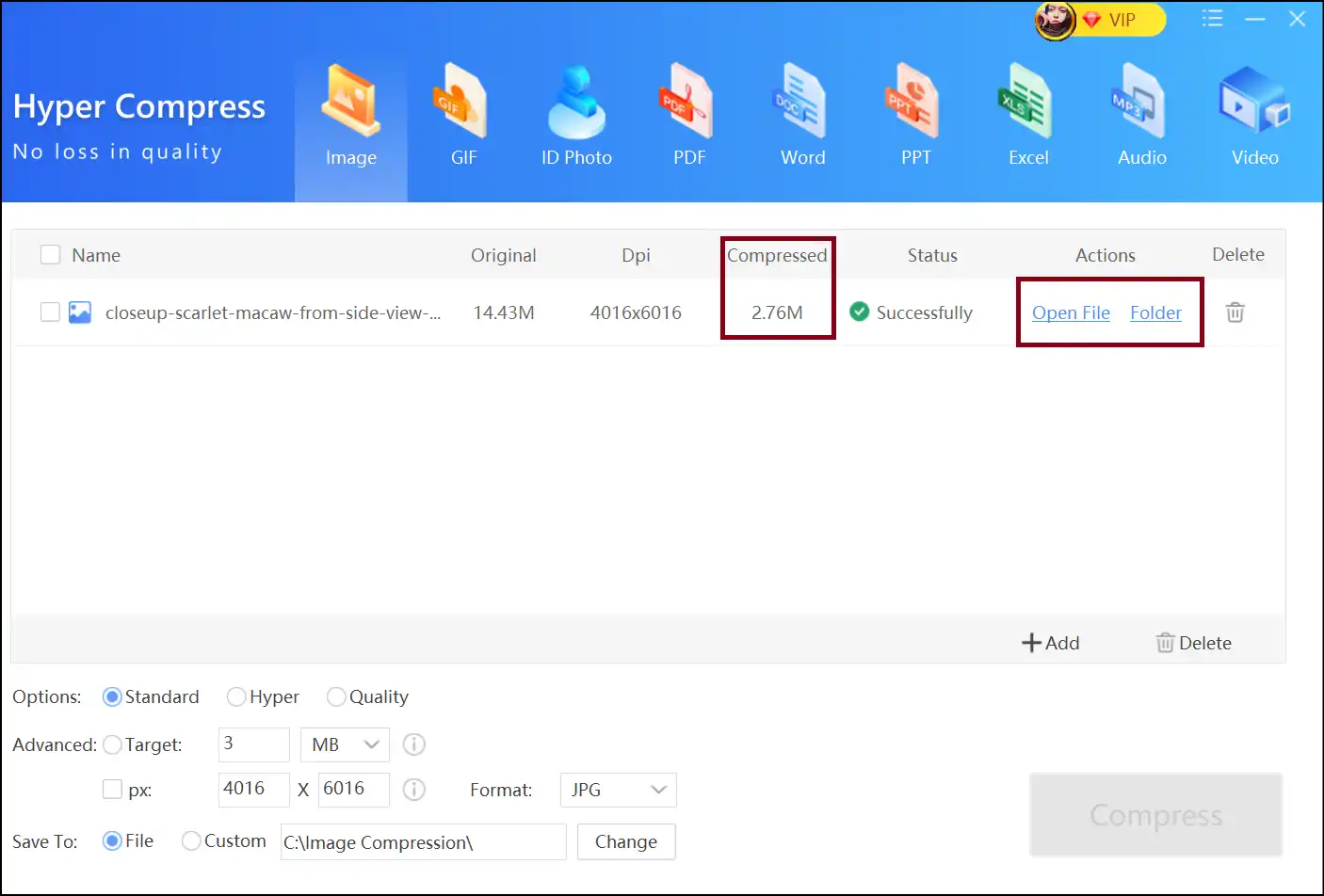
Step 3. Insert the compressed image: Once the image file is compressed, you can add it to your Word document. It will help you to lower Word file size significantly.
Part 6: Tips to Maintain Word Document Quality While Compressing Word Files
- Select lossless compression methods to lower file size without sacrificing visual quality.
- Before including photographs in your Word document, make sure to resize them.
- Maintain the proper compression balance to prevent loss of the quality of text or images in your Word document.
- Delete large embedded items, images, or videos not necessary, as they might greatly increase the size of the Word file.
- Word's built-in function helps you eliminate secret info, comments, or hidden information that could increase document size without giving an advantage.
Conclusion
It has never been simpler to compress word files. Each approach has a different goal, whether you use a clever offline solution like WMaster ZipKing or a free tool like Smallpdf to compress a Word file online. From compressing photos to saving in effective formats, this post offers 8 useful strategies to compress Word documents in 2025.
For Windows users, we recommend our free desktop tool, WMaster ZipKing, for the greatest all-in-one compression experience with no data loss. Give it a shot now to streamline your file-sharing experience.
